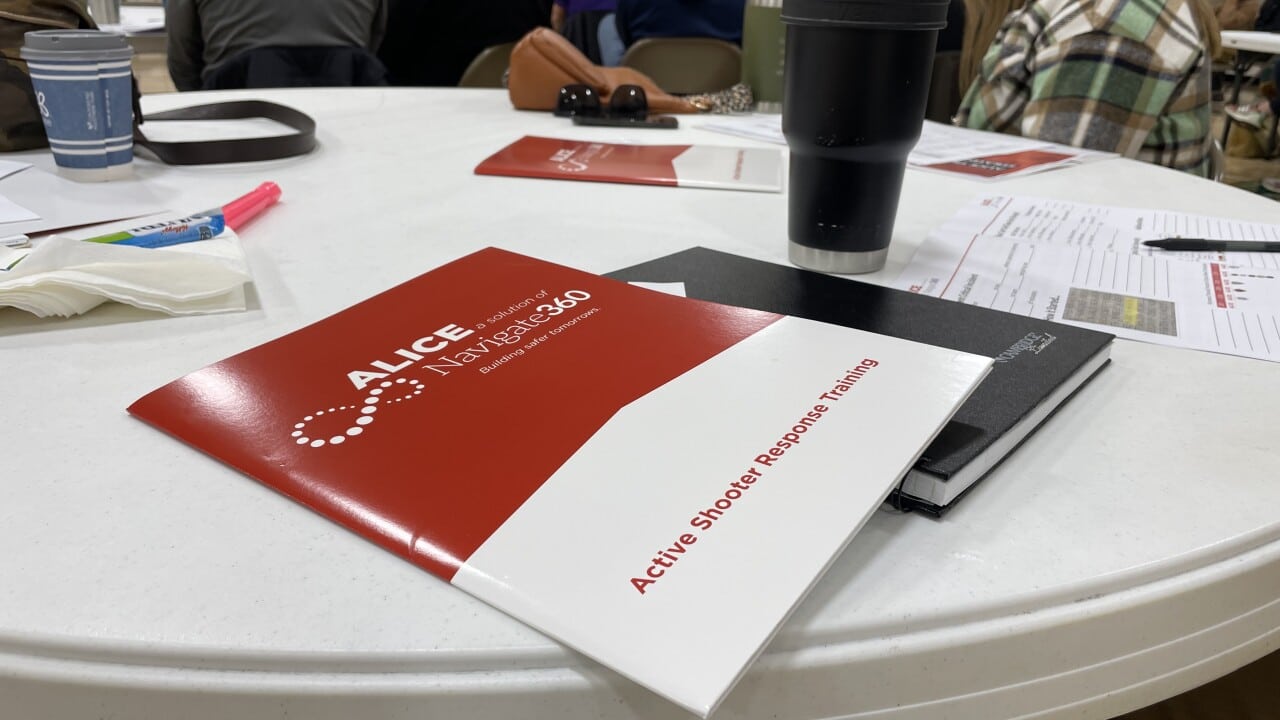Navigate360 experts Joseph Hendry, PSP, CLEE and Brad Spicer, National Director of Safety & Emergency Management share 7 best practices to consider when rethinking active shooter preparedness. In 2022, there were more than 300 incidents of gun violence on school campuses, resulting in the highest number of casualties thus far. Before the new school year begins, it’s critical that leaders prepare safety plans that protect their school campuses from prevention to recovery.
This article originally appeared in the Summer 2023 edition of the National Association of School Resource Officers (NASRO)’s official publication, The Journal of School Safety. Read the full story here.
7 Best Practices to Consider When Rethinking Your Active Shooter Preparedness
Joseph Hendry, PSP, CLEE and Brad Spicer, National Director of Safety & Emergency Management
With the rise in violence on campuses last school year, it’s critical that leaders revisit their preparedness plans before the new year begins. It’s not enough to hope tragedy won’t happen in your community – current trends of student mental health crises and violence toward self and others make it clear that every campus across the nation needs to have proactive plans in place to move students off a pathway to violence and onto the pathway to wellness.
As reported earlier this year, across more than 33 million online school and social media alerts, new data based on the use of Navigate360 solutions showed alerts related to self-harm up 51% year-over-year, as well as a 25% increase year-over-year in alerts related to weapons and harm to others. Additionally, more than 4,000 anonymous tips per week are coming into school tip lines, with the most common tips related to self-harm and weapons. Students are in crisis, and unless they receive holistic support, incidents of violence on school campuses will continue to rise.
Changing the tide of these concerning trends is going to require a comprehensive approach to school safety that must include proactive measures like threat assessments, trauma-informed drills and mental health services. This kind of approach – one that prioritizes overall student wellness and physical safety preparation in equal measure – can create a culture of safety and support that enables schools to address potential risks before they escalate.
Prevention Requires a Proactive Approach
If an emergency was situated as an “X” on a timeline, everything before “X” would be prevention, and response would occur after “X.” It’s crucial for schools to take proactive measures to stay before “X” – in other words, to identify and address potential threats before they escalate into actual incidents. While it’s vital that all schools have a response plan that is thorough and well-practiced, the ideal state is to have such a robust suite of proactive solutions that you never have to move beyond prevention.
Effective prevention focuses on both mental & emotional health and threat identification & assessment. Too many incidents of violence on school campuses are connected to unaddressed mental health issues, often discovered via leakage or piecing together disparate information after the fact. One of the biggest challenges in violence prevention is connecting the dots when a lot of people have a little information. In many cases, potential threats may be identified by multiple individuals, each of whom has a different piece of information. It can be difficult to know how to put these pieces together, and to determine whether they represent a genuine threat.
If schools have the tools and training in place to intervene when a student is in crisis and recognize the signs of potential escalation before an act of harm is carried out, they have a higher probability of preventing tragedy. These tools can include robust mental health supports, anonymous reporting tiplines, social media scanning technology, multi-disciplinary behavioral threat assessment teams and continuous training for all staff on how to recognize a student in need of support. Perhaps the most important element, though, is a strong culture of safety and support that establishes trust and open lines of communication with the school community and parents.
By building a strong sense of community and shared responsibility, schools can create an environment where students and staff feel empowered to speak up about potential threats, and where there is a collective commitment to preventing violence and promoting safety.
Adhering to Best Practices Can Mitigate Violence
Developing a proactive approach to school safety isn’t enough – the next, and most important step, is to ensure that the plan is effective and that all staff are well trained in how to execute it. This process is multi-layered, and ensuring fidelity can be complex. Committing to a set of best practices that clearly communicate expectations and guidance is a critical part of elevating a proactive, comprehensive safety plan to a level that will truly impact the holistic wellness of students and the security of school campuses.
The following are examples of best practices that can be implemented in any district to support enhanced safety & security:
- Develop a Comprehensive Safety Plan: The first step in preventing violence is to develop a comprehensive safety plan. This plan should be developed with input from school staff, law enforcement and community members. It should cover all aspects of school safety, from emergency procedures to the prevention of violence. Comprehensive safety planning must incorporate a wide range of solutions including:
- Campus security measures such as visitor management & risk assessment
- Student support tools like social-emotional learning & positive behavior intervention supports
- Digital safety measures that detect harm language in school-owned properties
- Multi-option active shooter response training that is trauma-informed and age- and ability-appropriate
- Implement a Behavioral Threat Assessment Team: One of the best ways to prevent violence is to identify potential threats early on. An effective way to do this is to implement a multi-disciplinary threat assessment team. This team should consist of school administrators, teachers, counselors and law enforcement officials that are trained to identify and assess threats and take appropriate action to prevent violence. Equipping this team with training in a standardized threat assessment methodology (such as CSTAG or NTAC) can prevent both over- and underreactions, holding all threats to the same standard of scrutiny and opportunity for intervention.
- Provide Training for Staff and Students: It’s important to provide training for staff and students on identifying and responding to potential threats. This should include training on how to recognize signs of violence, how to report potential threats and what to do in the event of an emergency. It’s not enough to train just a few members of the school staff in intervention and response. Every single adult who interacts with students must understand the signs of crisis and the steps necessary to provide that student with the support they need.
- Create a Positive School Culture: Creating a positive school culture can help prevent acts of violence. When students believe that adults at school genuinely care about their wellbeing, they are more likely to confide in them in times of stress, overwhelm or full-blown crisis. The relationship between students and school staff cannot be adversarial – it must be cooperative. Steps to building this kind of positive school community can include promoting positive relationships among students, encouraging good behavior and providing support for students who may be struggling.
- Increase Security Measures: Increasing security measures can also help prevent violence. This can include modernizing the visitor management system, outsourcing a professional risk assessment and staffing full-time SROs. Out-dated, siloed solutions are no longer acceptable. The only way to effectively manage the security of an entire campus, and the safety of every student and staff member within, is with fully integrated solutions that can provide all necessary information within minutes.
- Establish Clear Communication Channels: Clear communication channels are essential in preventing violence. Students and staff members should know where to report potential threats and be able to do so without fear of retaliation. In addition, parents and community members should be kept informed of any potential threats or safety concerns. Ensuring the community that safety is the school’s top priority will increase confidence in the work being done to ensure that safety.
- Foster Community Partnerships: Building partnerships between local law enforcement agencies and community organizations can help prevent violence. The support of law enforcement is a critical component of school safety. Students need to know that law enforcement presence on campus is meant to support – not punish – them, and community members need to be assured that their local law enforcement is prepared to respond in a moment of crisis. Being a present and vocal participant in the development of proactive safety planning and the cultivation of a positive school climate is the most important step law enforcement can take to reduce the occurrence of violence on school campuses.
By implementing these best practices, school districts can take a proactive approach to preventing and mitigating harm. While it may not be possible to prevent every act of violence, these best practices can help create a safer and more secure learning environment for everyone involved.
It’s Time to Rethink the Approach to School Safety
The traditional, siloed approach to school safety is not effective in preventing and mitigating tragedy – it’s time to rethink these strategies to better protect students, staff and communities. Implementing a more proactive and holistic approach, with mental health support, behavioral threat assessment & enhanced physical security solutions and committing to a set of best practices is the only path forward to reduce the current trends of increasing violence on campus. It is critical for schools to prioritize the safety and well-being of their students and staff by continually evaluating and improving their active shooter response plans.
Understand Your Risks & Prepare Your School to Respond with Confidence
Keeping your campus safe is a complicated task. From assessing risk and developing emergency operation plans to training your students and staff to stay safe – you need more than point solutions. That’s why we believe in integrated safety solutions that work better together to build a culture of safety on your campus.
Download this Buyers Guide now to learn how Navigate360’s safety solutions can help you develop and implement plans and strategies designed to improve critical incident prevention, mitigation, response, and recovery.



